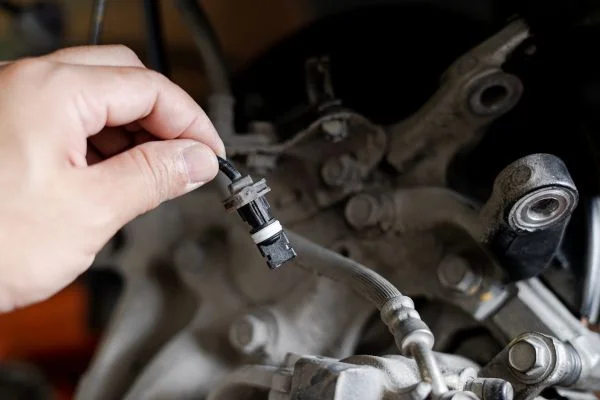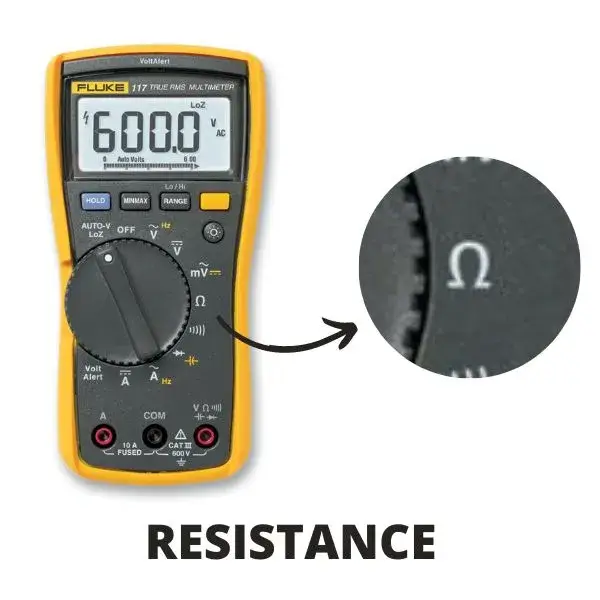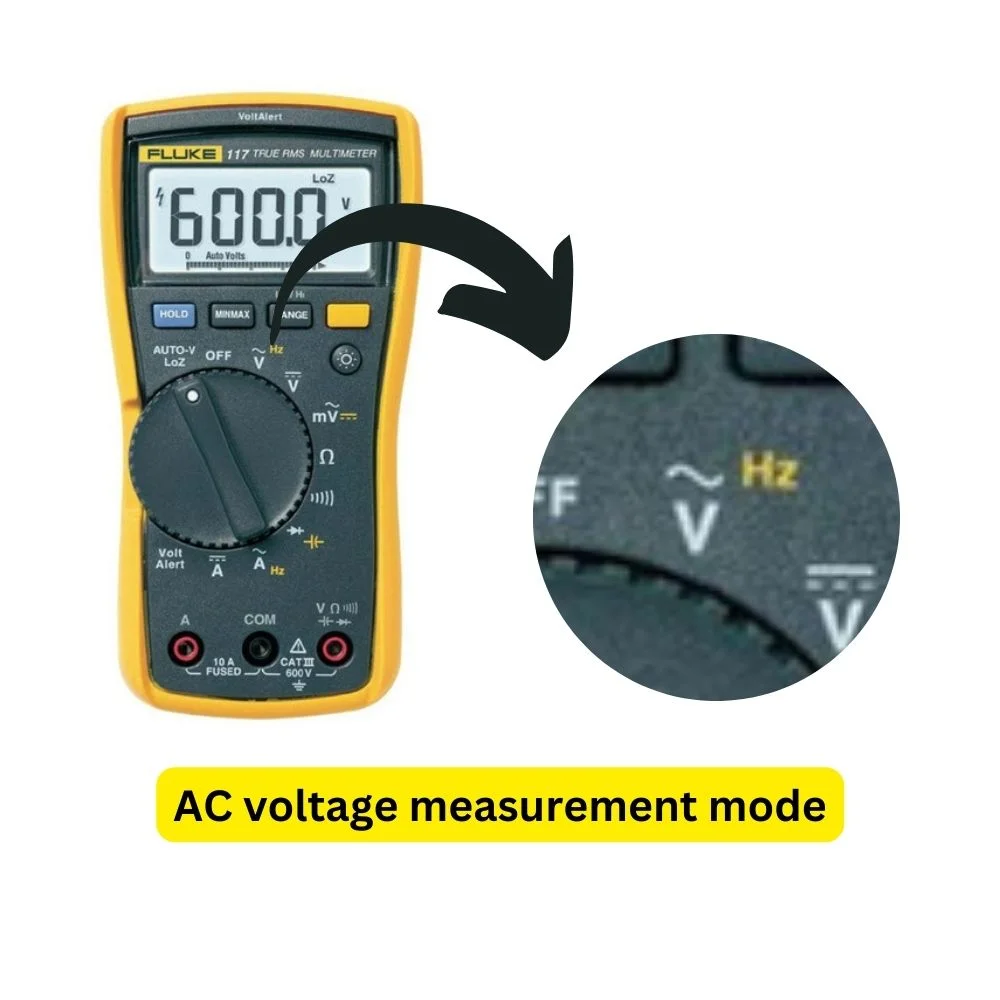An ABS (anti-lock braking system) sensor is a crucial component of a vehicle’s braking system, and it’s essential to ensure it’s functioning properly. One of the most common methods of testing an ABS sensor is by using a multimeter. In this blog post, we’ll walk you through the steps on how to test ABS sensor with multimeter.
What is an ABS Sensor?
An ABS sensor is a vital component of a vehicle’s braking system, responsible for measuring the speed of each wheel. The data collected by the ABS sensor is then relayed to the vehicle’s ABS controller, which uses the information to prevent the wheels from locking up during hard braking.
This helps the driver maintain control of the vehicle during sudden stops or emergency braking situations, making the roads safer for everyone.

Why Test an ABS Sensor?
Over time, an ABS sensor can become damaged or fail due to wear and tear. So one should know how to test ABS sensor with multimeter. If an ABS sensor is not functioning correctly, it can affect the vehicle’s braking system, resulting in reduced braking performance or even complete brake failure. That’s why it’s essential to test the ABS sensor regularly to ensure it’s working correctly.
Read more about: How to Test a Transmission Speed Sensor
How To Test ABS Sensor with Multimeter? Step by Step Guide
Testing an ABS sensor with a multimeter is a straightforward process, and you don’t need to be a mechanic to do it. If you’re Wondering which one to choose a voltage tester or a multimeter then you can visit our guide on it. Now coming back to our testing guide here are the steps to follow:

Step 1: Prepare the Vehicle
Before you start testing the ABS sensor, make sure the vehicle is on a level surface and in the park. Turn off the ignition and disconnect the battery’s negative terminal to prevent any electrical damage to the vehicle.
Step 2: Locate the ABS Sensor
The ABS sensor is usually located on the hub or axle of each wheel. Consult your vehicle’s manual to identify the location of the ABS sensor.
Step 3: Check the Sensor for Damage
Before you test the ABS sensor, inspect it for any physical damage such as cracks, breaks, or corrosion. If you notice any damage, you’ll need to replace the sensor before testing it.

Step 4: Set the Multimeter to Ohms
To test the ABS sensor, you’ll need to set the multimeter to the Ohms setting. This will allow you to measure the resistance of the ABS sensor.

Step 5: Connect the Multimeter to the ABS Sensor
Connect the multimeter to the ABS sensor using two test leads. The test leads should be connected to the sensor’s positive and negative terminals.
Step 6: Measure the Resistance of the ABS Sensor
With the multimeter connected to the ABS sensor, measure the resistance of the sensor. The resistance value should be within the range specified in your vehicle’s manual. If the resistance value is outside the range, the ABS sensor is faulty and needs to be replaced.
The specified values for a good ABS sensor can vary depending on the make and model of your car, so it’s crucial to consult the manufacturer’s service manual or documentation for precise information. However, I can provide some general guidance:
Good ABS Sensor:
Front Sensor: Typically, the resistance of a good front ABS sensor can range from about 1000 to 2500 ohms.
Rear Sensor: For rear ABS sensors, the resistance may be slightly higher, often between 1500 to 3000 ohms.
Bad ABS Sensor:
Open Circuit: A bad sensor might show an open circuit, which means infinite resistance (OL) on your multimeter display. This indicates that there is a break in the sensor’s wiring or internal components.
Short Circuit: In some cases, a short circuit can occur, resulting in extremely low resistance readings (close to 0 ohms).
Step 7: Test the Sensor While Spinning the Wheel
Another way to test the ABS sensor is to spin the wheel and measure the voltage output of the sensor. You can do this by using a back probe to connect the multimeter to the ABS sensor’s positive terminal. Then, spin the wheel and measure the AC voltage output.

A good sensor should generate an AC voltage signal in the range of approximately 100 to 1000 millivolts (0.1 to 1.0 volts) when the wheel is spun manually. The voltage output should fluctuate as the wheel spins. If there is no voltage output or the voltage output is constant, the ABS sensor is faulty and must be replaced.
Step 8: Repeat the Test for Each Wheel
Repeat the above steps for each wheel to ensure that all ABS sensors are functioning correctly. If you know more about the comparison of Fluke and Klein, then I have made a guide for you on that too.
Safety Guidelines:
Testing an ABS sensor with a multimeter can be a useful and straightforward process to ensure your vehicle’s braking system is functioning correctly. However, it’s essential to follow safety guidelines to avoid any accidents or injuries.
Here are some safety tips to keep in mind when testing an ABS sensor with a multimeter:
- Always wear safety gloves and goggles to protect your hands and eyes from any electrical or mechanical hazards.
- Make sure the vehicle is on a level surface and in the park before testing the ABS sensor.
- Disconnect the battery’s negative terminal to prevent any electrical damage to the vehicle.
- Be careful when connecting the multimeter to the ABS sensor to avoid any accidental short circuits or shocks.
- Follow the manufacturer’s instructions when setting up the multimeter to avoid any damage to the tool.
- Always double-check the test leads’ connection to ensure proper readings and avoid any false readings.
- Don’t spin the wheel too fast or too forcefully, as it can cause the vehicle to move and lead to accidents.
If you’re not comfortable testing the ABS sensor yourself, it’s always best to take your vehicle to a qualified mechanic who can diagnose any issues and make the necessary repairs.
By following these safety guidelines, you can ensure a safe and successful ABS sensor testing process.
Conclusion
Testing an ABS sensor with a multimeter is a straightforward process that can help ensure your vehicle’s braking system is functioning correctly. Regular testing can help detect any issues with the ABS sensor early, preventing more significant problems down the road. If you’re not comfortable testing the ABS sensor yourself, it’s always best to take your vehicle to a qualified mechanic who can diagnose any issues and make the necessary.
FAQs About How to Test ABS Sensor with Multimeter?
Here are five frequently asked questions related to testing an ABS sensor with a multimeter:
Can I test an ABS sensor without a multimeter?
Yes, there are other methods to test an ABS sensor, such as using an oscilloscope or a scan tool. However, a multimeter is a cost-effective and easy-to-use tool for testing the sensor.
What should I do if the resistance value is outside the specified range?
If the resistance value of the ABS sensor is outside the specified range, it means that the sensor is faulty, and it needs to be replaced.
How do I know if my vehicle has an ABS sensor problem?
If you notice any of the following signs, it could indicate an ABS sensor problem:
- The ABS warning light on the dashboard comes on
- You experience a pulsating brake pedal or hear strange noises during braking
- Your vehicle takes longer to come to a complete stop than usual
Can I replace the ABS sensor myself?
Replacing the ABS sensor requires some technical knowledge and experience, and it’s not recommended for everyone. If you’re not familiar with vehicle repairs, it’s best to take your vehicle to a qualified mechanic.
How often should I test my ABS sensor?
There’s no specific time frame for testing an ABS sensor, but it’s recommended to test it at least once a year or when you notice any of the signs mentioned above. Regular testing can help detect any issues early and prevent further damage to the braking system.
